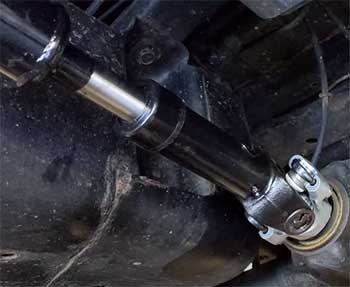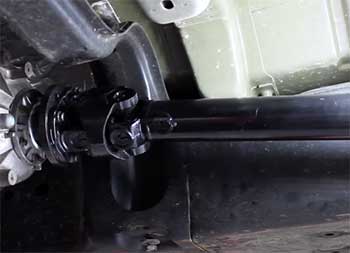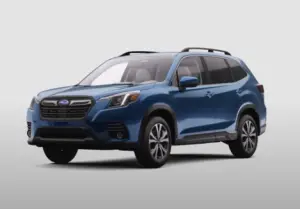So, you’ve come to the age-old question: which is better, the Adams Driveshaft 1310 joint or the 1350 joint? Fear not, for we are here to break down the pros and cons of both options, and help you make an informed decision.
Through this storytelling journey, you’ll discover the characteristics of each joint, their strengths and weaknesses, and ultimately decide which one is the best fit for your needs.
A Brief Comparison Table
| Feature | Adams Driveshaft 1310 Joint | Adams Driveshaft 1350 Joint |
| Power Handling | Up to 300-350 HP (approx.) | Up to 600-800 HP (approx.) |
| Durability | Moderate | High |
| Compatibility | Wide range of vehicles | Limited; may require modifications |
| Affordability | Budget-friendly | Higher cost |
| Ease of Replacement | High; parts readily available | Moderate; more specialized |
| Vibration & Noise | Standard | Reduced |
The Tale of Two Joints
Once upon a time, there were two driveshaft joints competing for the hearts of off-roaders and performance enthusiasts alike. These two contenders were none other than the Adams Driveshaft 1310 and 1350 joints.
Both had their own unique features and capabilities, but as in any competition, only one could emerge victorious.
The Sturdy and Reliable 1310 Joint

The 1310 joint, known for its durability and reliability, has been a staple in the automotive world for decades. Let’s dig into the pros and cons of this joint.
Pros:
- Affordability: The 1310 joint is more budget-friendly than 1350, making it a popular choice for those who want to keep costs down without sacrificing quality.
- Compatibility: This joint is highly compatible with a wide range of vehicles, making it an ideal choice for many.
- Ease of Replacement: Due to its popularity, replacement parts for the 1310 joint are readily available, simplifying the repair process.
Cons:
- Limited Power Handling: The 1310 joint can handle only a certain amount of power, making it unsuitable for high-horsepower applications.
- Less Durability: While still sturdy, the 1310 joint doesn’t match the robustness of the 1350 joint, particularly in demanding conditions.
The Powerful and Robust 1350 Joint
Enter the 1350 joint, renowned for its power handling capabilities and incredible strength. Let’s delve into the pros and cons of this joint.

Pros:
- Increased Power Handling: The 1350 joint can handle more power than the 1310, making it ideal for high-horsepower applications and demanding environments.
- Greater Durability: This joint is designed for heavy-duty use, providing long-lasting performance and resistance to wear and tear.
- Reduced Vibration: Thanks to its larger size and improved construction, the 1350 joint reduces vibration and noise, providing a smoother driving experience.
Cons:
- Higher Cost: The 1350 joint comes with a heftier price tag compared to the 1310, which may deter some budget-conscious buyers.
- Limited Compatibility: As a more specialized joint, the 1350 isn’t as widely compatible with different vehicles, which may necessitate modifications for proper fitment.
Frequently Asked Questions (FAQ)
The choice between a 1310 and 1350 driveshaft depends on your vehicle’s power output and your intended usage. If your vehicle has a moderate power output and you’re not planning to use it in extreme conditions, the 1310 driveshaft should suffice. However, if you have a high-horsepower application or plan to subject your vehicle to demanding environments, the 1350 driveshaft is a better choice.
The main differences between the 1310 and 1350 joints lie in their power handling capabilities and durability. The 1350 joint is designed to handle more power and provide greater durability, making it ideal for high-horsepower applications and heavy-duty usage. The 1310 joint, on the other hand, is better suited for moderate power output and offers more affordability and compatibility with a wider range of vehicles.
The power handling capacity of a 1310 u-joint varies depending on the manufacturer and specific application. However, as a general rule of thumb, a 1310 u-joint can handle up to 300-350 horsepower in most cases. Keep in mind that this is a rough estimate, and the actual power handling capacity may differ based on factors such as torque and drivetrain setup.
The power handling capacity of a 1350 u-joint also varies depending on the manufacturer and specific application. Generally, a 1350 u-joint can handle up to 600-800 horsepower, making it a better option for high-horsepower vehicles and demanding conditions. As with the 1310 u-joint, these figures are approximate, and the actual power handling capacity may differ based on factors such as torque and drivetrain setup.
The main differences between 1310, 1330, and 1350 u-joints are their sizes, power handling capabilities, and durability. The 1310 u-joint is the smallest and most common, suitable for moderate power output and offering wide compatibility. The 1330 u-joint is a mid-sized option, providing a balance between the 1310 and 1350 joints in terms of power handling and durability. The 1350 u-joint is the largest and most robust, designed for high-horsepower applications and heavy-duty use.
Also Read: Should You Get TrueDrive Suspension Parts?
The Final Verdict
In the epic battle between Adams Driveshaft 1310 and 1350 joints, the ultimate victor depends on your specific needs and preferences. If you’re looking for a budget-friendly, widely compatible option for moderate power output, the 1310 joint may be your ideal choice.
However, if you’re willing to invest in higher power handling capabilities and greater durability for demanding applications, the 1350 joint may be the way to go.
As our storytelling journey comes to an end, remember that the best choice is the one that aligns with your vehicle’s requirements and your intended usage.
Armed with the knowledge of the pros and cons of each joint, you can now make an informed decision that will serve you well on your off-roading and performance adventures.



